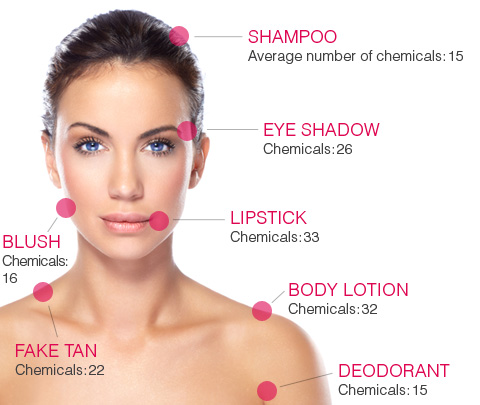by Doug Schoon and Ana Seidel
Reprinted from Nails HQ Magazine
Chemicals
Should You Fear Them?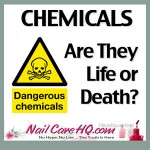
One of the hottest topics is 3-Free and now 5-Free nail polishes. Where does this end and what’s to keep someone from now demanding 7-Free?
~Doug Schoon, author of Nail Structure and Product Chemistry
Is There a Chemical Free Product?
Want to make £1million ($1.6 million US) the easy way?
All you have to do is identify a truly chemical-free product.
That should be pretty easy with so many companies claiming to have “chemical-free” products.
 A £1million bounty was offered for UK’s first chemical-free product in February 2010, but so far no one has claimed the prize.
A £1million bounty was offered for UK’s first chemical-free product in February 2010, but so far no one has claimed the prize.
Wonder why?
Could it be that those who make such claims know they are tricking the public for personal gain and profit?
To expose this trickery, the Royal Society of Chemistry (RSC) announced they would award a £1 million bounty to the first person who can crack this impossible task and create a product that is truly 100% chemical-free.
Why did this prestigious society offer this challenge?
Research by the UK’s cosmetic and toiletries industry reveals 52% of women and 37% of men actively seek out chemical-free products, demonstrating a deep-seated public confusion about chemicals and how we interact with them in daily life.
What Is Chemical?
The confusion comes with the misunderstanding of the word “chemical”.
Everything on the planet has a chemical structure.
According to the dictionary—chemistry is the branch of science that deals with the identification of the substances of which matter is composed; the investigation of their properties and the ways in which they interact, combine, and change; and the use of these processes to form new substances.
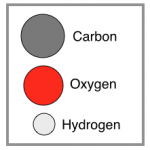 The facts are, the vast majority of chemicals that people come into contact with each day are completely safe. Many are beneficial and essential for your life.
The facts are, the vast majority of chemicals that people come into contact with each day are completely safe. Many are beneficial and essential for your life.
Our bodies are constantly manufacturing chemicals.
For example, proteins are chemicals made by other chemicals called amino acids. This process requires use of the powerful chemical solvent known as water.
Yes, water and air are chemicals too!
A Clever Deception
The Advocacy Groups
Certain cosmetic advocacy groups have focused on deceiving the general public about cosmetic, beauty and personal care products.
Now they’re branching out to attack salon products and services!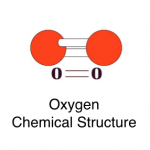
They regularly e-mail scaremongering misinformation and post outlandish statements on their websites.
Why? In large part, to frighten the public into donating millions of dollars, much of which is used to spread more misinformation. This contrived data is designed to frighten the public.
The intent is to convince the public into applying greater pressure on well-meaning politicians to support often unnecessary, or misguided regulations.
Guilty by Six Degrees of Separation?
Some advocacy groups make exaggerated claims that certain ingredients are “linked” to an illness or disease even if only one study vaguely suggests this may be a possibility, while many other scientific studies disprove these claims.
The word “linked” is regularly used to trick the public/media into falsely believing that common ingredients, with a long history of safe use, are now suddenly dangerous.
This “linked trick” is used to fool the public into believing that these ingredients must be “toxic”.
Usually the evidence for such claims is very weak, or highly questionable, and almost always exaggerated.
For instance, if you applied, the “Six Degrees of Separation” rule, then every substance on Earth would be “toxic” because they are somehow “linked” to every illness, injury and disease!
 By this method, organically grown carrots, baby’s breath, even pure oxygen or ancient glacier water would easily be “linked” to problems such as appendicitis, manic depression, broken bones, freckles, warts and even leprosy.
By this method, organically grown carrots, baby’s breath, even pure oxygen or ancient glacier water would easily be “linked” to problems such as appendicitis, manic depression, broken bones, freckles, warts and even leprosy.
Of course this sounds silly, but no more silly than the pseudo-scientific misinformation coming from the anti-chemical advocacy groups.
Beware of Tricksters
Many groups ignore any scientific information that disagrees with them.
They intentionally misquote studies. They distort statistics to support the bogus information they spread on a regular basis.
These groups do NOT want you to know the truth.
Instead, they use tricky and deceptive claims like “may cause…” or “it is believed that…” or “could be linked to…”.
These misleading phrases are used because they lack the real proof needed to justify their claims.
Risky? Or Beneficial?
An extremely popular deception used is to focus solely on the “risks/hazards”. The “benefits” are completely ignored.
Since we know there always two sides to a topic, this is an unrealistic approach.
Cars Versus Planes
It is statistically proven that riding in a car is more dangerous than flying in a plane.
But more people are afraid of flying than getting in a car.
Just because some people drive poorly and cause accidents is not a reason to demonize or ban cars.
In certain instances cars may be hazardous, but they are safe when used properly.
A better solution is to focus on improving the skills of poor drivers. By minimizing the “risks”, we safely enjoy the “benefits” that cars provide.
Too Much of A Good Thing?
It’s also important to look at the “hazard vs. exposure” equation.
Hazard Versus Exposure
Credit: Amolife.com
The Sun
Let’s look at the sun. Everyone thinks it’s a good thing. Of course it is.
The sun is essential to life on planet Earth.
Spending time in the sun improves our mood, warms our skin and helps our body create an essential vitamin to our health; vitamin D.
But in large doses without sunscreen or a deep tan, the sun can cause 2nd degree, blistering burns.
An excess of the sun’s UV radiation can be life-threatening in extreme cases, and long term overexposure can lead to skin cancer.
The sun is hazardous. Does this mean we should never go out in the sun? Of course not.
We value the benefits in spite of the risks of sun exposure.
Bleach
Bleach is a compound that many consider quite hazardous yet it is sold in stores daily.
At full strength, bleach can burn your skin. But in proper dilutions, like in public swimming pools, it makes the water safer for swimming.
Again—risks vs. benefits.
Our Beauty Products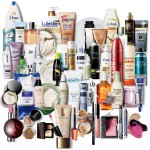
Hair shampoo and conditioners do NOT cause cancer or birth defects.
Lipsticks are extremely safe and do NOT contain harmful amounts of lead.
Nail polish has been safely used for 80 years, until these groups created a hoax to make people believe it is suddenly unsafe.
The list goes on and on.
There is an anti-chemical activists group to find fault in just about anything and everything, so why should these groups be allowed to force companies to stop using their best ingredients just to satisfy their overly paranoid and misguided beliefs?
This is what’s been going on for many years now.
Chemicals or Ingredient List?
Take a look at the photo below. It was featured on a cosmetic advocacy group website.
This photo is edited to make it look like these products have dangerous chemicals.
When in reality, they’re simply counting the ingredient list. Check your shampoo. About how many ingredients does it have? Most likely it’s about 15.
At the end of the article they made the following statement.
“So, our take home message is…….read the label. If you cannot pronounce it, it probably is not good for you or your family.”
Is that actually true? Let’s think about this.
Even “natural” ingredients can be sinisterly portrayed.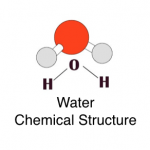
Alpha-tocopherol, Tocopherols, Tocotrienols are Vitamin E
Olea Europaea is Olive Oil
And my favorite — Dihydrogen Monoxide is water!
The water molecule has the chemical formula H2O, meaning each molecule of water is composed of two hydrogen atoms and one oxygen atom. Literally, the term “dihydrogen monoxide” means “two hydrogen, one oxygen”, consistent with its molecular formula: the prefix di- in dihydrogen means “two”, the prefix mon-in monoxide means “one”, and an oxide is a compound that contains one or more oxygen atoms. [source: En-Wikipedia.org]
How Gullible Are We?
The general public is easily confused by scientific chemical names and advocacy groups rely on our lack of knowledge.
In fact, it’s so bad that dihydrogen monoxide has become a major hoax on the internet that is spreading like the plague.
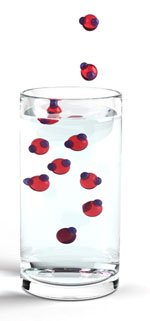 The dihydrogen monoxide hoax involves calling water by the unfamiliar chemical name “dihydrogen monoxide” (DHMO), and listing some of water’s effects in an alarming manner, such as the fact that it accelerates corrosion and can cause severe burns.
The dihydrogen monoxide hoax involves calling water by the unfamiliar chemical name “dihydrogen monoxide” (DHMO), and listing some of water’s effects in an alarming manner, such as the fact that it accelerates corrosion and can cause severe burns.
The hoax often calls for dihydrogen monoxide to be regulated, labeled as hazardous, or banned. It illustrates how the lack of scientific literacy and an exaggerated analysis can lead to misplaced fears.
In 1997, Nathan Zohner, a 14-year-old student at Eagle Rock Junior High School in Idaho Falls, made the news when he based his science fair project on the hoax circulating the internet.
Zohner’s project, titled “How Gullible Are We?”, involved presenting that warning about “the dangers of dihyrogen monoxide” to fifty ninth-grade students and asking them what (if anything) should be done about the chemical.
Forty-three students favored banning it, six were undecided, and only one correctly recognized that ‘dihydrogen monoxide’ is actually plain old water.
Zohner’s analysis of the results he obtained won him first prize in the Greater Idaho Falls Science Fair; garnered him scads of attention from newspapers, magazines, radio and TV stations, universities, and congress people; and prompted the usual round of outcries about how our ignorant citizenry doesn’t read critically and can be easily misled. [source: www.snopes.com/science]
A Course in Creative Writing
There are several advocacy groups on the internet supporting the ban of water.
Here’s an example of some of their sales copy.
Dihydrogen Monoxide (DHMO) is a colorless and odorless chemical compound, also referred to by some as Dihydrogen Oxide, Hydrogen Hydroxide, Hydronium Hydroxide, or simply Hydric acid. Its basis is the highly reactive hydroxyl radical, a species shown to mutate DNA, denature proteins, disrupt cell membranes, and chemically alter critical neurotransmitters. The atomic components of DHMO are found in a number of caustic, explosive and poisonous compounds such as Sulfuric Acid, Nitroglycerine and Ethyl Alcohol.
Yes, you should be concerned about DHMO! Although the U.S. Government and the Centers for Disease Control (CDC) do not classify Dihydrogen Monoxide as a toxic or carcinogenic substance (as it does with better known chemicals such as hydrochloric acid and benzene), DHMO is a constituent of many known toxic substances, diseases and disease-causing agents, environmental hazards and can even be lethal to humans in quantities as small as a thimbleful.
Research conducted by award-winning U.S. scientist Nathan Zohner concluded that roughly 86 percent of the population supports a ban on dihydrogen monoxide. Although his results are preliminary, Zohner believes people need to pay closer attention to the information presented to them regarding Dihydrogen Monoxide. He adds that if more people knew the truth about DHMO then studies like the one he conducted would not be necessary.
Notice who that award-winning U.S. scientist Nathan Zohner is? He’s the 14 year old student who won first place at the Greater Idaho Falls Science Fair!
The website also sells t-shirts with the phrases “Ban DHMO” or “DMHO Kills” for $18 US dollars. They claim that their t-shirts are high-quality, 100% Cotton T-shirts that are DHMO free.
It’s very important that we think and do research before donating our hard earned cash.
Will Nail Polish Ingredients Kill You?
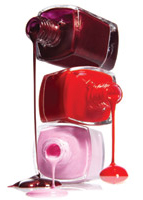 One of the hottest topics is 3-Free and now 5-Free nail polishes.
One of the hottest topics is 3-Free and now 5-Free nail polishes.
Where does this end and what’s to keep someone from now demanding 7-Free?
This is clearly becoming ludicrous and all because of unfounded fear with little or no science to back such claims.
What Is a 3-Free Polish?
3-Free polishes do not contain Dibutyl Phthalate (DBP), Formaldehyde and Toluene.
First, it’s important to remember that your nails are made up of about 100 layers of dead keratin cells.
Polish hardens when the solvents that make it liquid evaporate into the air. The ingredients—including vitamins or minerals—do not penetrate the nail plate.
Let’s take a look at the purpose of those 3-free feared ingredients.
Dibutyl Phthalate (DBP) is a plasticiser to prevent chips and cracks.
Tosylamide/Formaldehyde Resin (TAF Resin) – a copolymer resin created by linking short molecules together to create longer ones. It improves adhesion and toughens the polish coating.
TAF resin sticks strongly to the nail plate, but it is too soft and has a dull appearance. Although there is a great deal of unfounded fear about TAF, it is currently the best nail polish resin on the market.
TAF needs to be combined with a film former called Nitrocellulose. It produces a very hard shiny surface but does not stick to the nail plate and is too brittle. TAF resin and nitrocellulose make a great pair.
Toluene Sulfonamide Formaldehyde Resin (TSF Resin) – A polymer produced from each of the chemicals in it’s name.
Toluene Sulfonamide Epoxy Resin – a replacement for TAF or TSF. Polishes that contain this resin suffer from poor shelf life and it doesn’t compare to TAF or TSF resins for strength and durability.
These products should not be confused with Formaldehyde. Formaldehyde is a clear colorless gas that is not used in nail polish. Formaldehyde is never listed as a nail polish ingredient, but you will find it in some “nail hardeners”.
Why should nail polish companies stop using the best ingredients, which have been proven to create polishes with exceptional wear and durability?
The US FDA and Health Canada
According to Health Canada and the US Food and Drug Administration, the facts are that “Cosmetics are among the safest products consumers can purchase.”
Based on my 30 year career in chemistry, I agree whole heartedly!
The Canadian Cosmetic, Toiletry and Fragrance Association (CCTFA), a very highly respected Canadian cosmetic association have produced a brand new, really EXCELLENT and FUN short animated film related to this topic. I thank the CCTFA for allowing me to help introduce this to you and hope you will share it with everyone you know. http://youtu.be/7YrNdWofE80
Should Fear Rule Your Pocketbook?
Anti-chemical groups have manufactured the false notion that hidden dangers lurk in these types of products and their scare tactics have made a lot of money for them!
I keep receiving emails from an anti-cosmetic activist group asking me to donate money to their “cause”.
The E-mails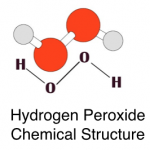
It doesn’t matter which particular group sends the e-mail, they all start the same way; telling me how lucky we are THEY are working to save us from all the supposedly dangerous “chemicals” in cosmetics. You know, the ones that are supposedly killing babies and everybody else too.
Look at their e-mails and you’ll quickly discover the “Donate Here” link. Now they are using mobile apps to collect even more money, so it’s no surprise they rake in huge amounts of money. Obviously, this is a cash cow, especially when we’re following the rest of the herd.
Honestly, what else can they do?
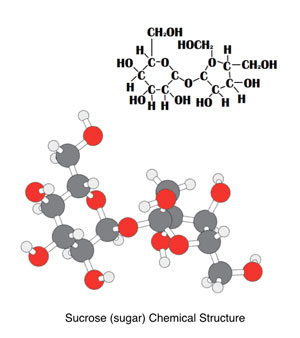 Who’s Getting Used?
Who’s Getting Used?
Without any solid evidence, they can’t debate the facts with knowledgeable scientists.
Instead, they use the Internet and the news media to launch unfounded attacks.
They pretend to be champions of truth, when instead they are the exact opposite.
My advice is to NEVER donate to any group that focuses on spreading fear and misinformation about cosmetics and their ingredients.
They will just continue needlessly frightening your friends and clients. Please don’t support such groups or visit their websites.
Fear-based advocacy groups are self-serving and don’t have your best interest at heart.
Most are tax-exempt, money making machines that seek to control the political process so they can promote their own irresponsible agendas.
Don’t be fooled! They don’t really care about any of us.
Much of this money will be used to promote misguided regulations that aren’t needed, and if passed would cause more harm than good. Please don’t donate to any “fear-based” activist groups.
Instead, tell them you don’t appreciate their exaggeration and distortions and ask your friends/clients to say the same. These groups are unlikely to stop their trickery as long as it is lucrative to frighten the public.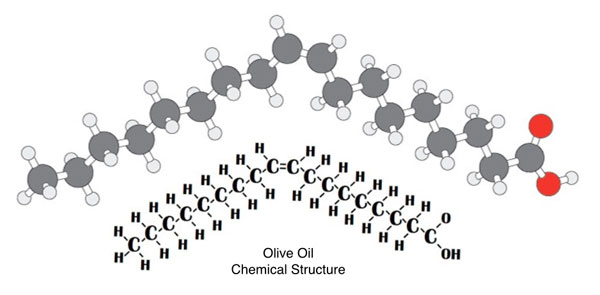
In Conclusion
Doug Schoon, Author of Nail Structure and Product Chemistry
In the end, I hope I’ve helped you understand “chemicals” a little better.
It’s a topic that certainly gets me fired up!
I spend my days fighting for your right to enjoy going to the salon.
You have the right to pamper yourself with beautiful polishes and nail enhancements.
Yes, our beloved products have chemicals. You shouldn’t be afraid of them because they have a chemical structure.
Nail polish consists of a blend of chemicals that have been proven to be safe when used according to the manufacturers directions.
Remember, you are
made up of many
millions of chemicals …
… and so am I.
 What Do You Think?
What Do You Think?
Did this article change your thoughts in any way? Comment below
 US Dollars
US Dollars
 CAD
CAD
 Euro
Euro


